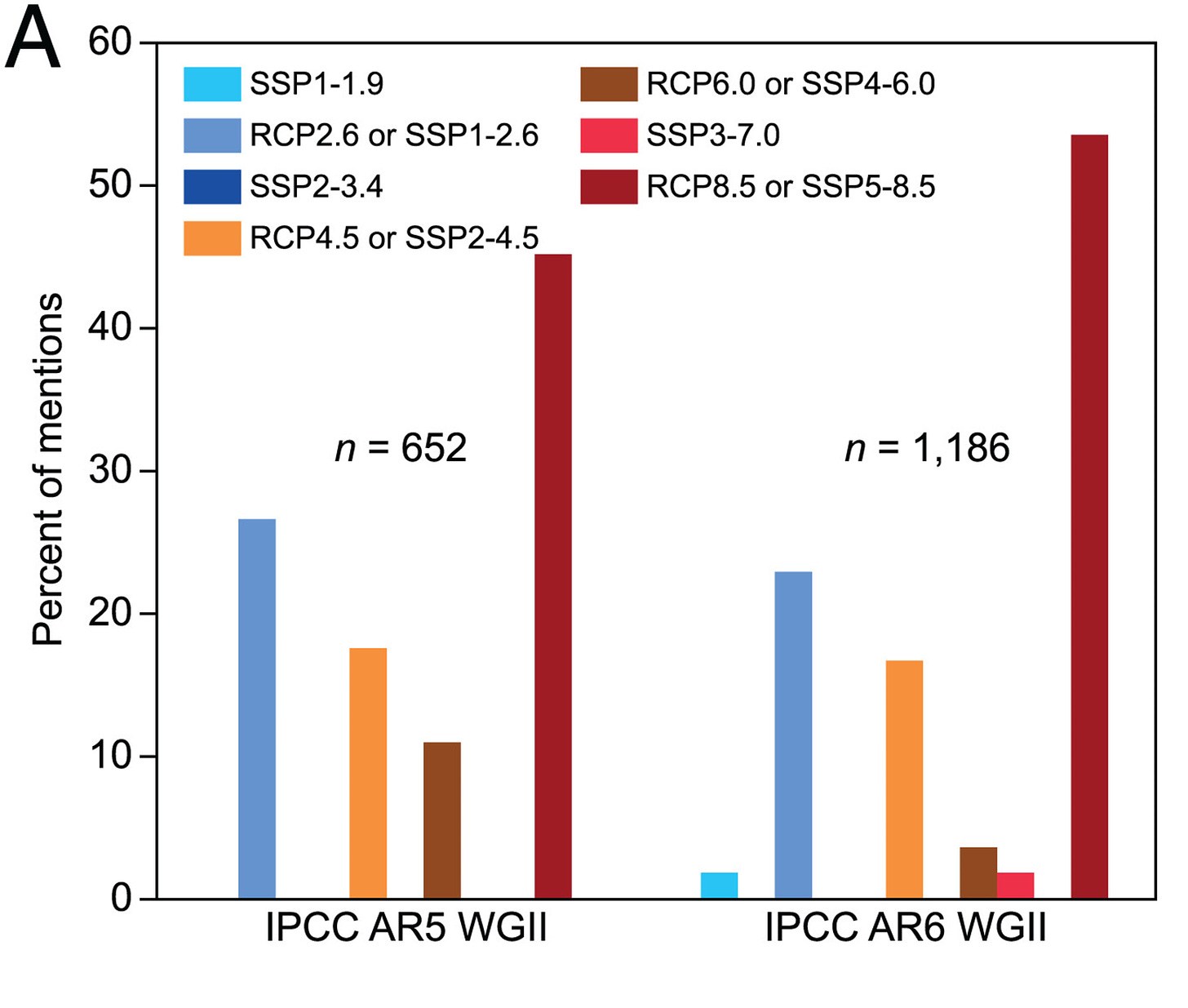https://rogerpielkejr.substack.com/p/are-we-focusing-too-little-on-a-climate
By Roger Pielke Jr.
Yesterday, Matt Burgess, Justin Ritchie and I had a new letter appear in the Proceedings of the National Academy of Sciences (PNAS). The letter was a response to a recent opinion piece in PNAS by Luke Kemp and colleagues (hereafter KXDL22) who argue that “worldwide societal collapse or even eventual human extinction” due to human-caused climate change is currently “a dangerously underexplored topic.”
Apocalyptic visions of climate change are all the rage. For instance, they are a staple of speeches by UN General Secretary António Guterres by who argues that we are presently “firmly on track to an unlivable world.” President Joe Biden often invokes similar rhetoric: “Climate change is literally an existential threat to our nation and to the world.” Just yesterday PNAS published another commentary repeating the arguments of Kemp and colleagues, and again making the case for greater attention to climate change and “civilizational collapse.”
In this post I provide an overview of our exchange with KXDL22, and go into greater detail than we were able to in that short piece. Of course, the views expressed here are mine, not necessarily those of my co-authors.
In their original PNAS opinion calling for more attention to catastrophic climate scenarios — titled “Climate Endgame” — KXDL22 make three empirical claims. The first is that the scientific community is neglecting to pay sufficient attention to extreme climate scenarios. The second claim is that the world is presently on track for as much as 3.9 degrees Celsius temperature increase by 2100, which would be catastrophic. And the third claim is the scientific community should emphasize catastrophic scenarios as a way to motivate desired political action.
Let’s take each in turn.
Does climate science focus enough attention on extreme scenarios?
In our letter, we agree with KXDL22 that the most extreme scenarios presently available in climate research focus on high levels of radiative forcing (specifically 7.0 and 8.5 watts per meter squared). I and my colleagues have published considerable research in recent years on the prevalence of various climate scenarios in the scientific literature and the assessments of the Intergovernmental Panel on Climate Change (IPCC). KXDL22 were apparently unaware of this research.
The figure below from our letter in response (hereafter BPR22) shows the frequency of mentions of different scenarios in the IPCC Working Group II reports (on impacts, adaptation and vulnerability) of the most recent two assessments. This is the IPCC working group that focuses on the consequences of projected climate change.

There can be no doubt that the scenarios that receive the most attention, by far, are the most extreme — RCP8.5 and SSP5-8.5. In fact, a more comprehensive accounting that we published last year showed that the most extreme scenario dominated the IPCC AR5 and the U.S. National Climate Assessment, as you can see in the table below.

A simple search of Google Scholar for publications in 2022 that use the most extreme climate scenarios indicates that 20 studies per day have been published this year which use RCP8.5 and SSP5-8.5. The extreme scenarios are by far the most used in climate research, for reasons we explain in depth (start here).
Catastrophic climate scenarios are not being neglected. Far from it. We love them.


